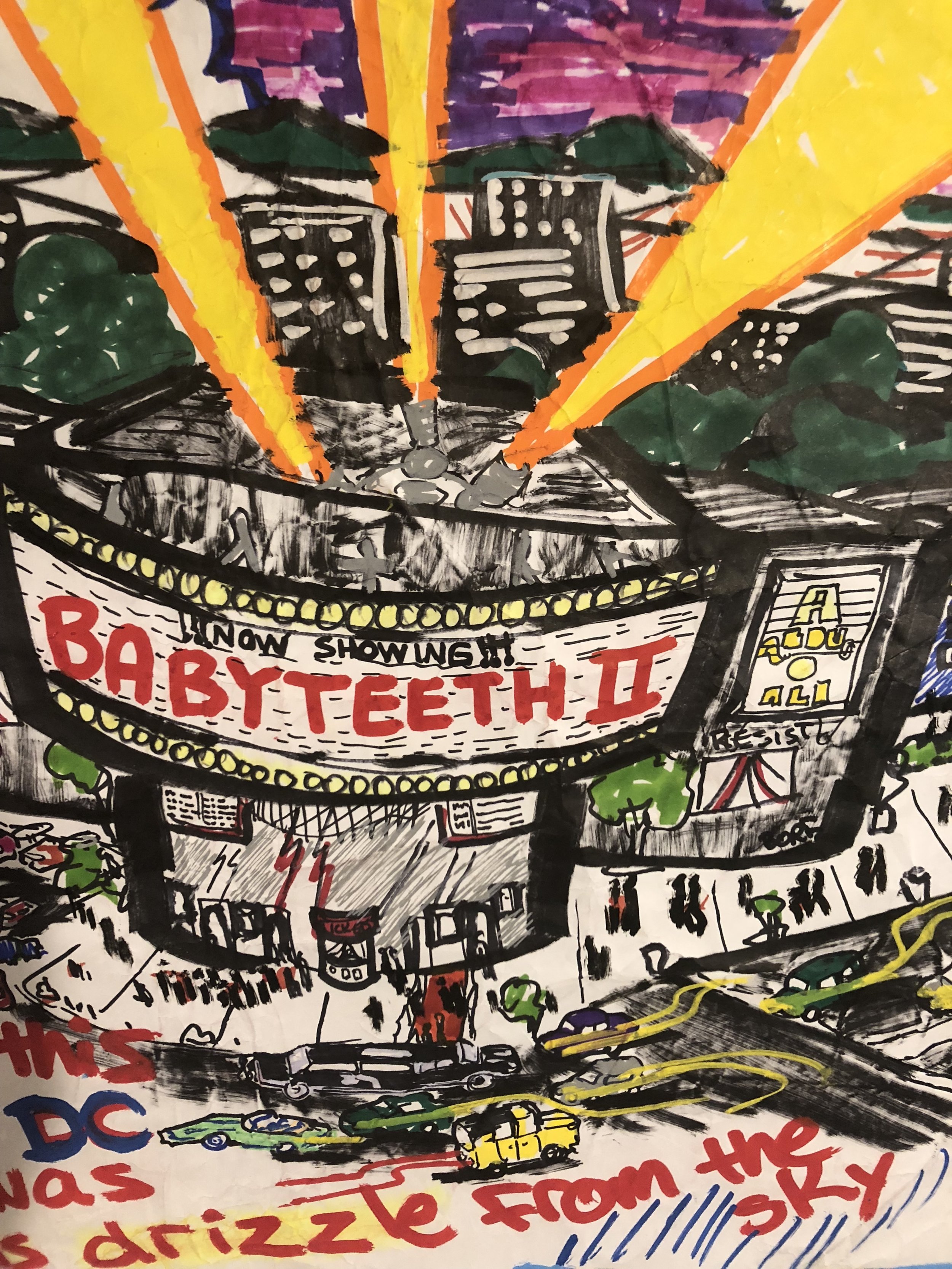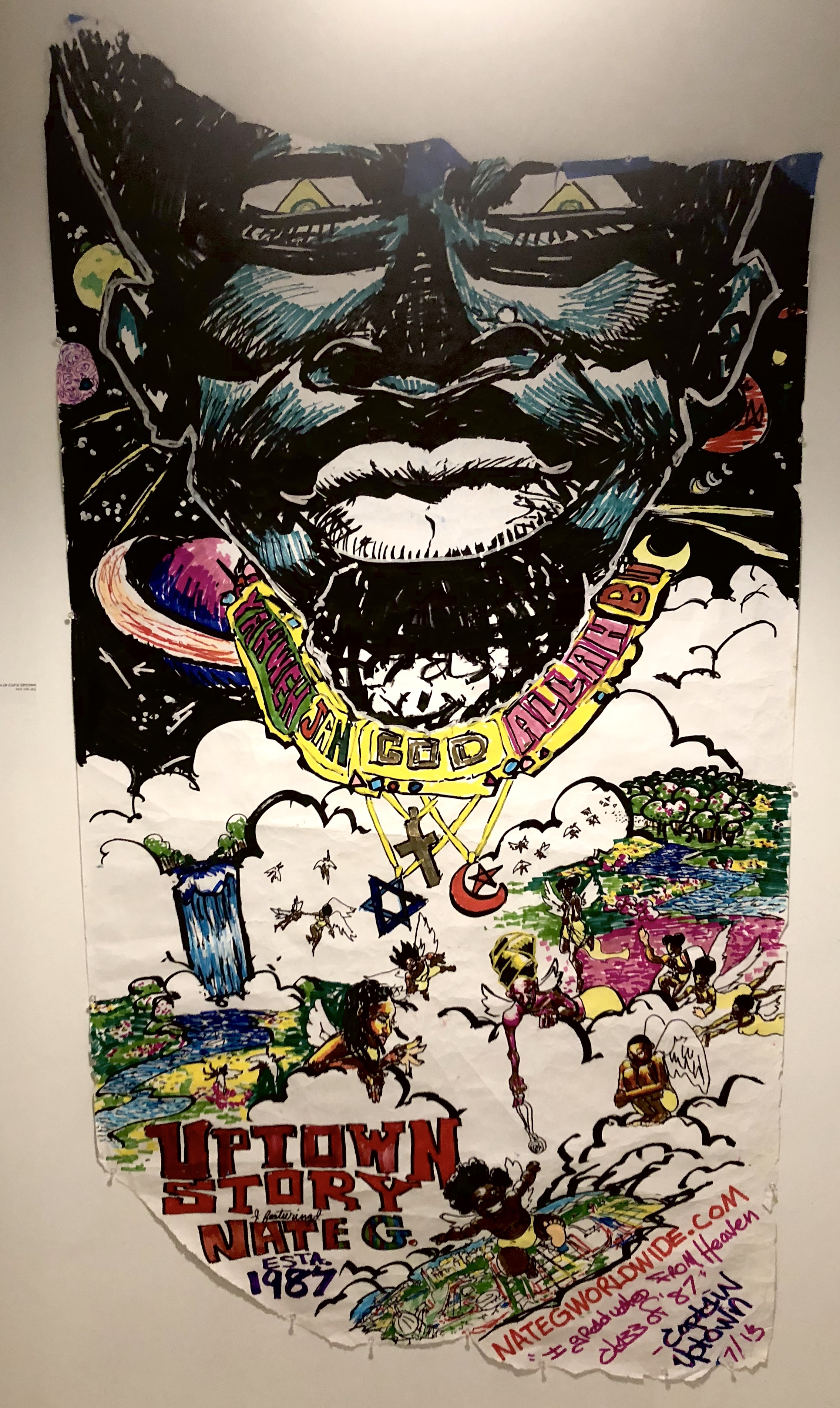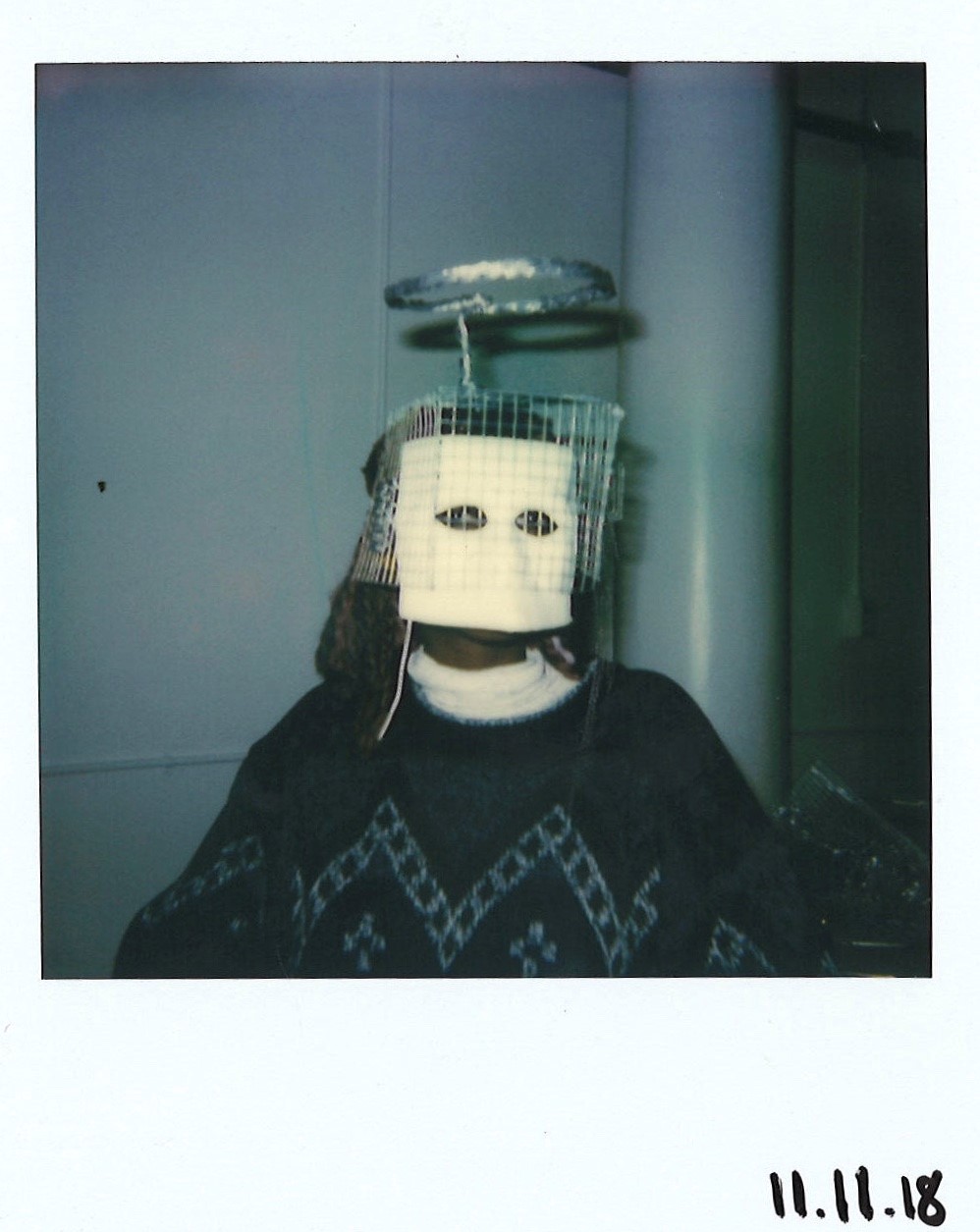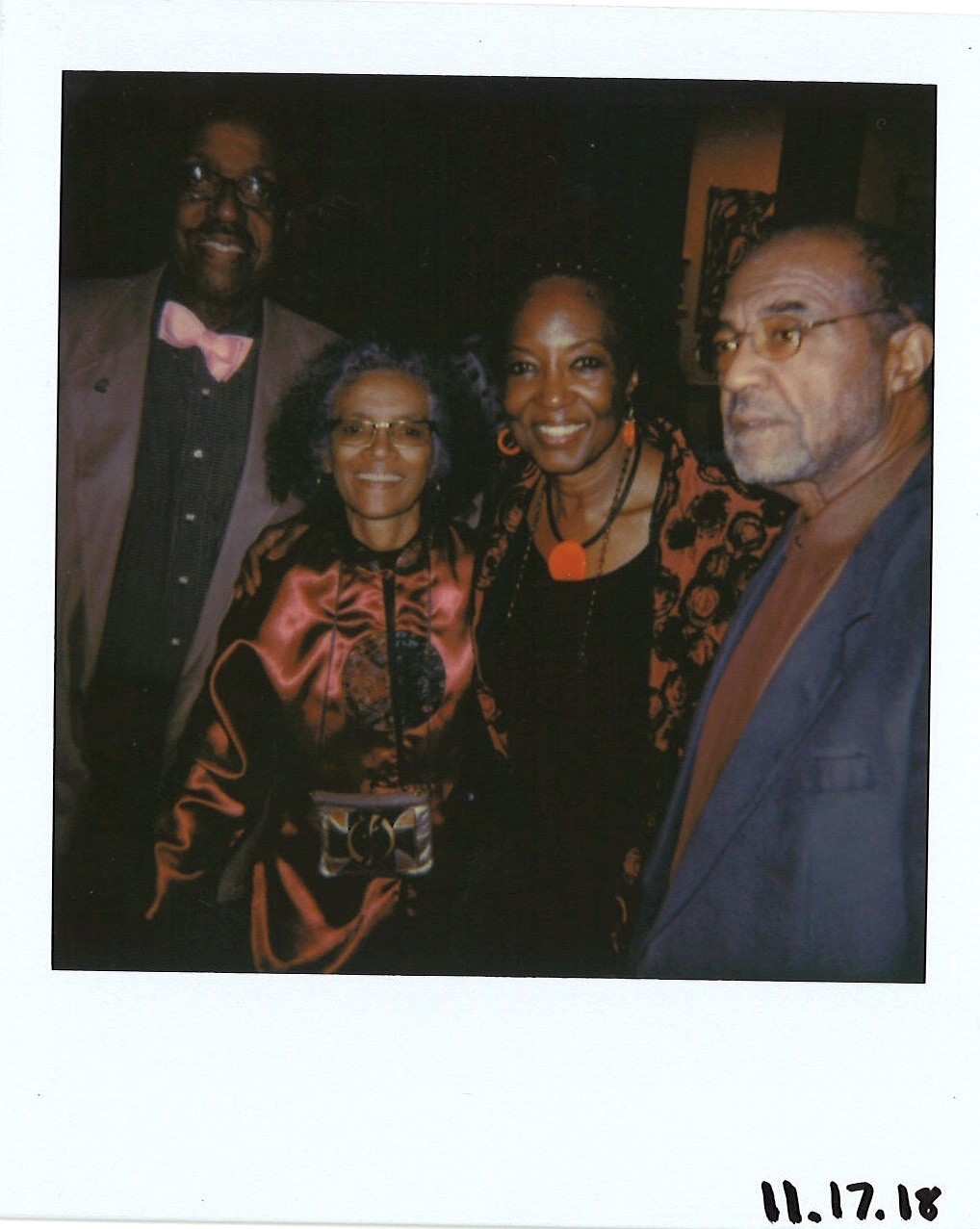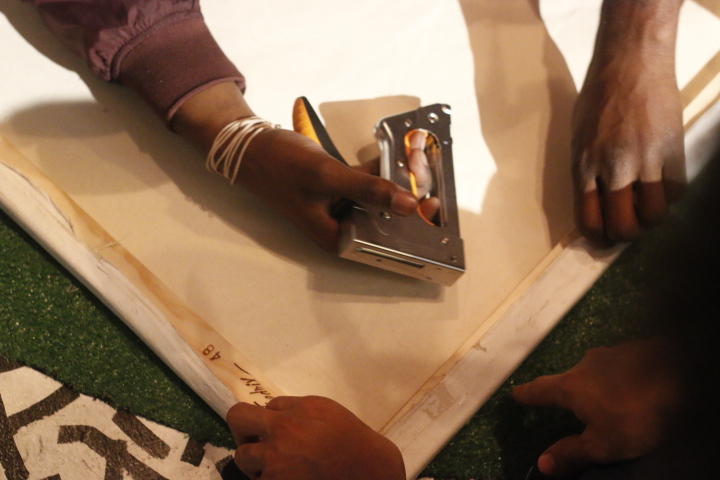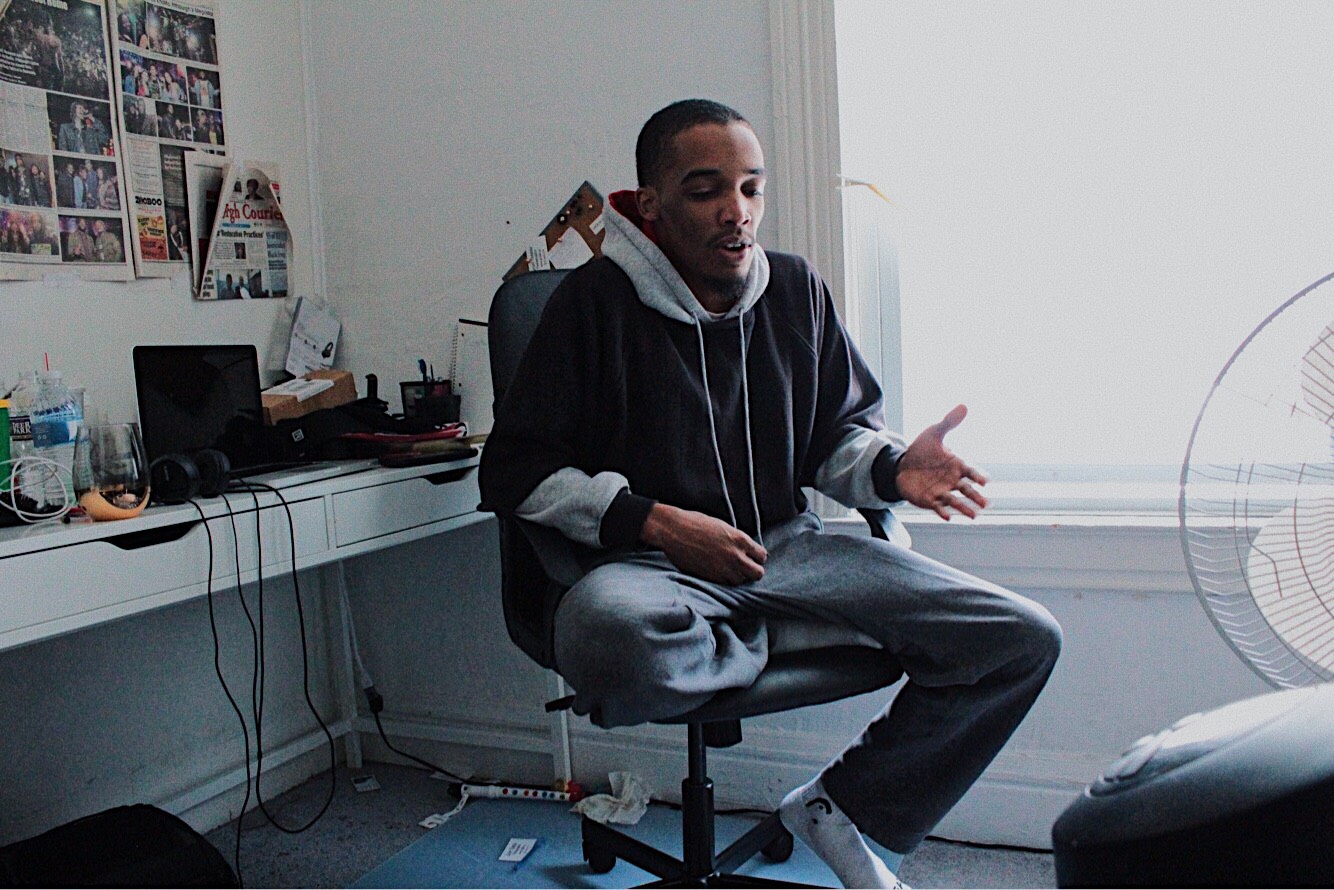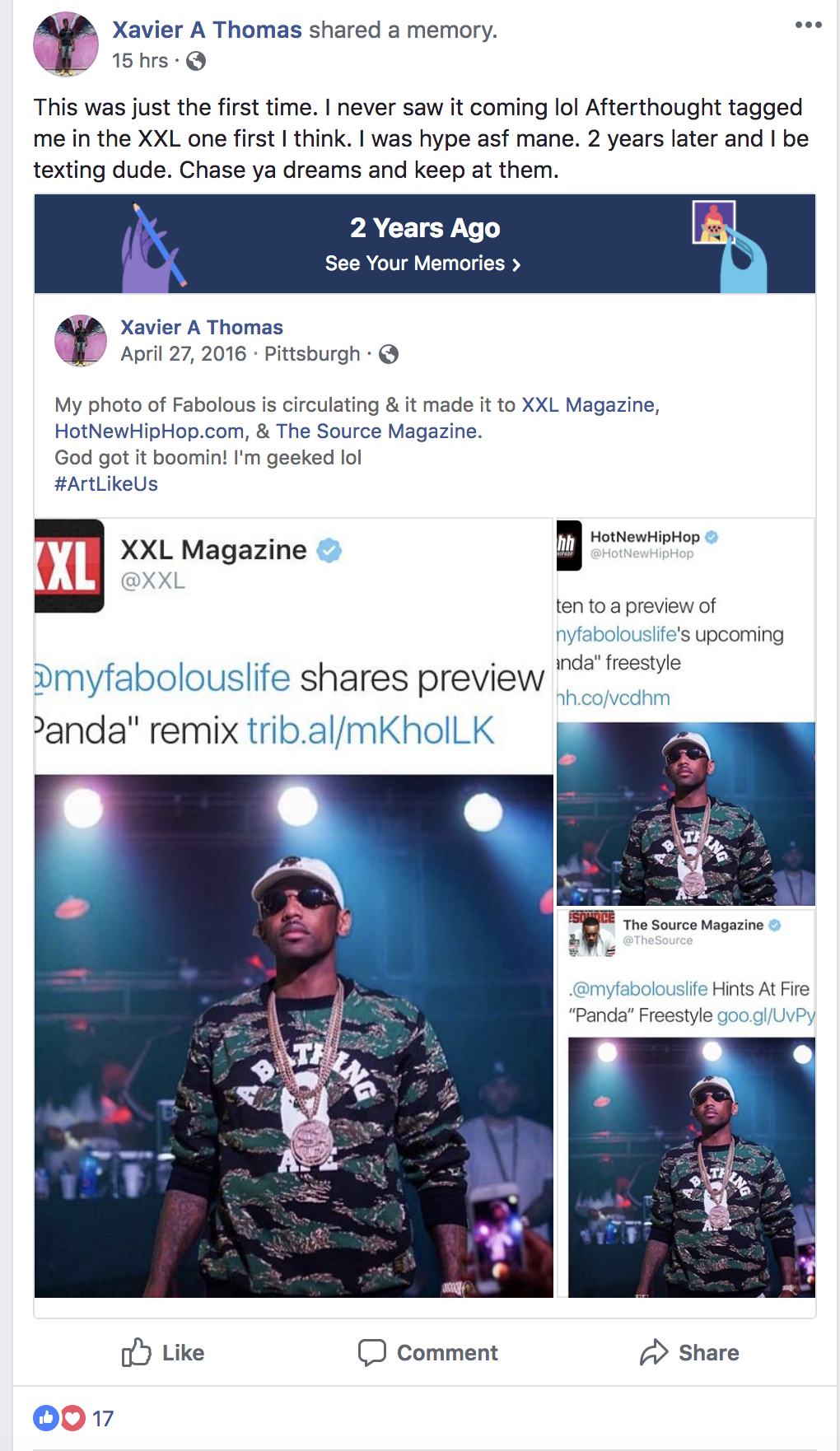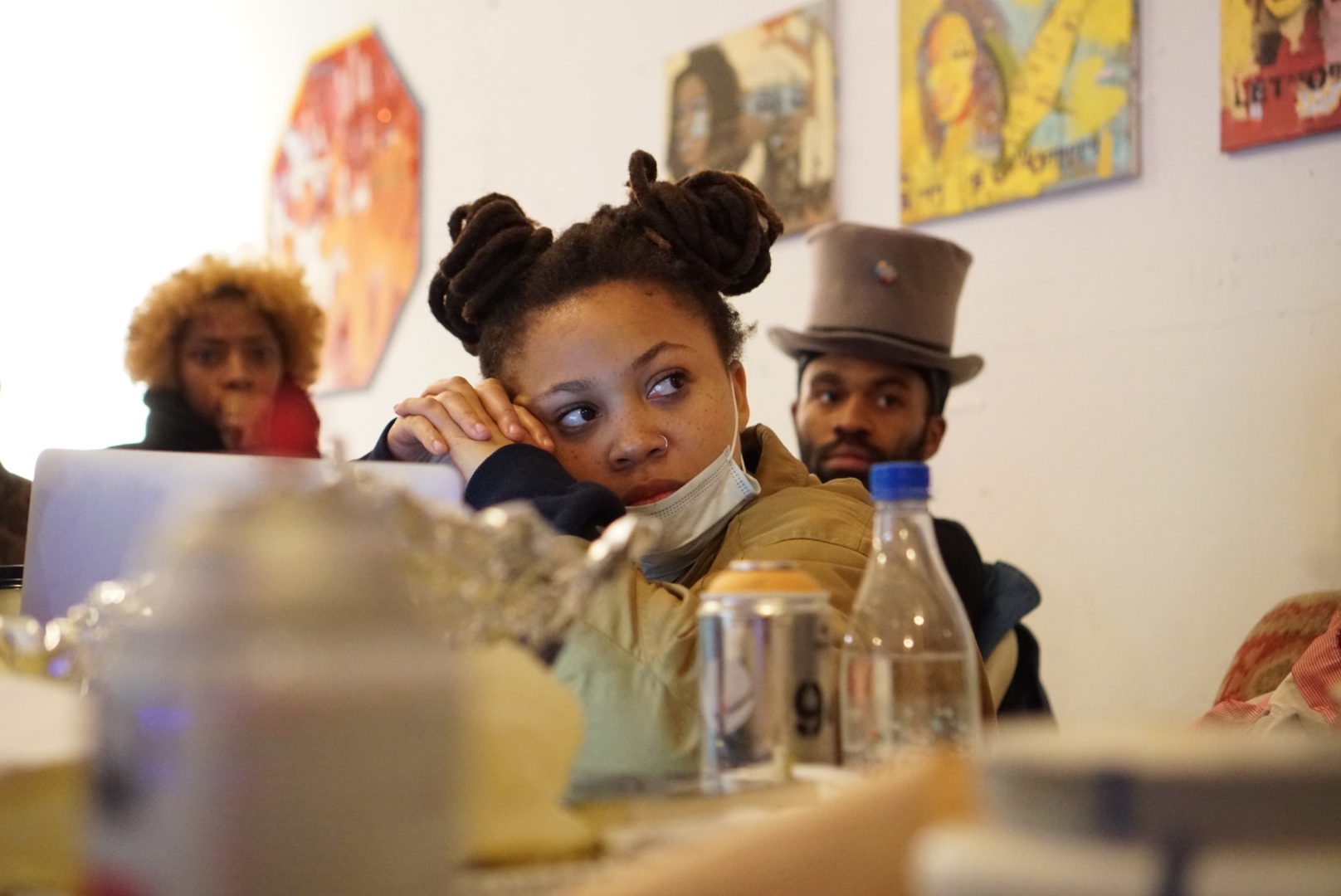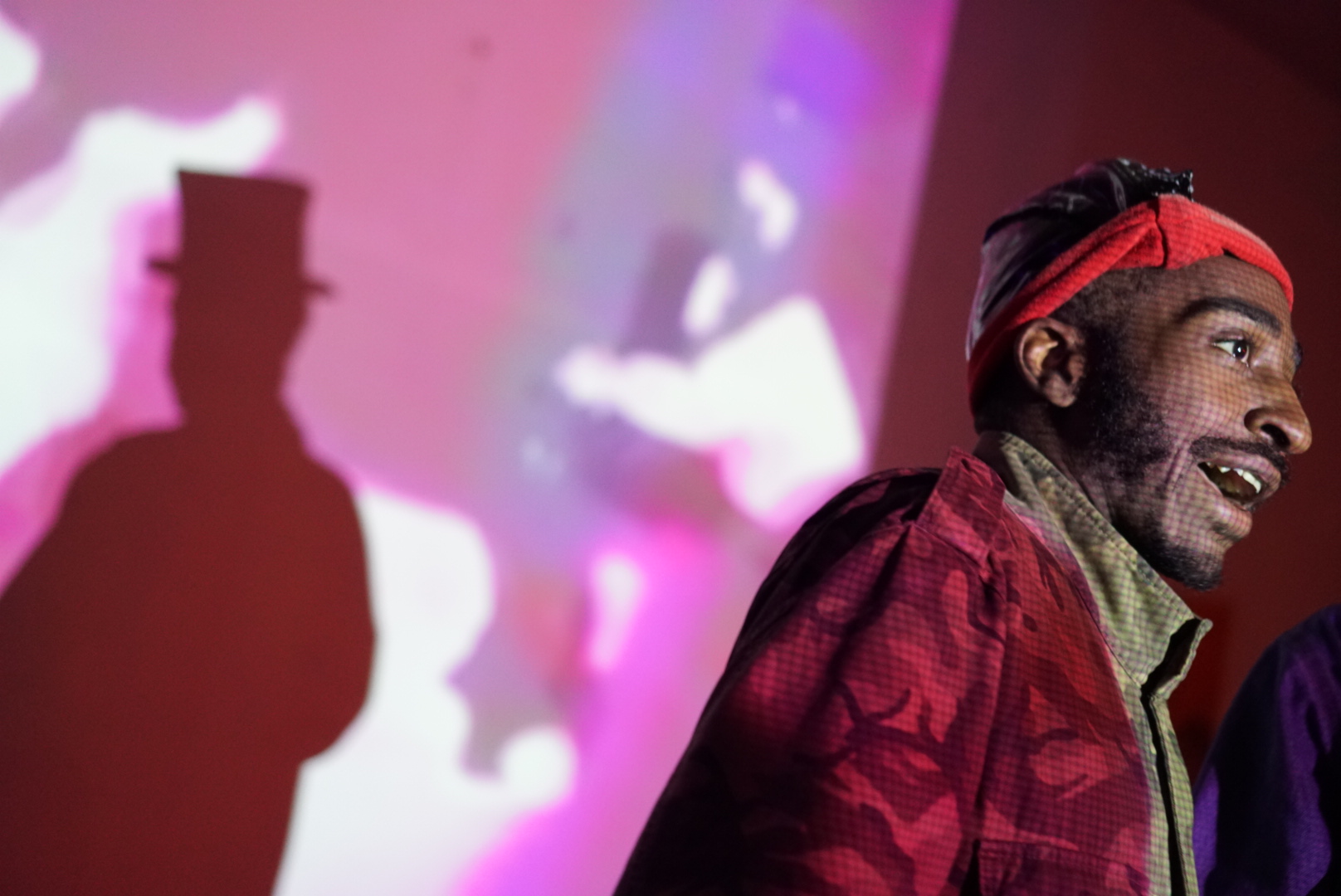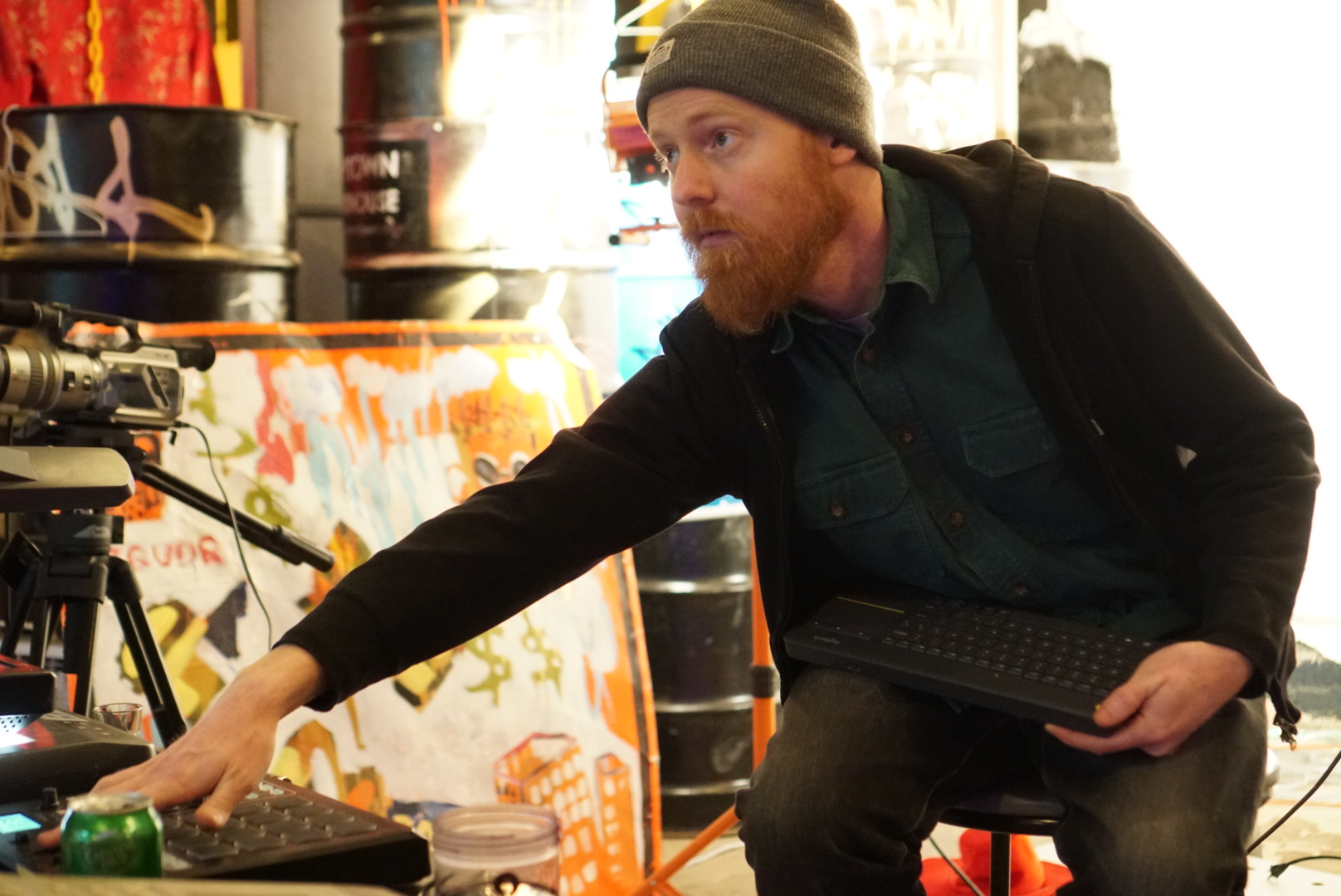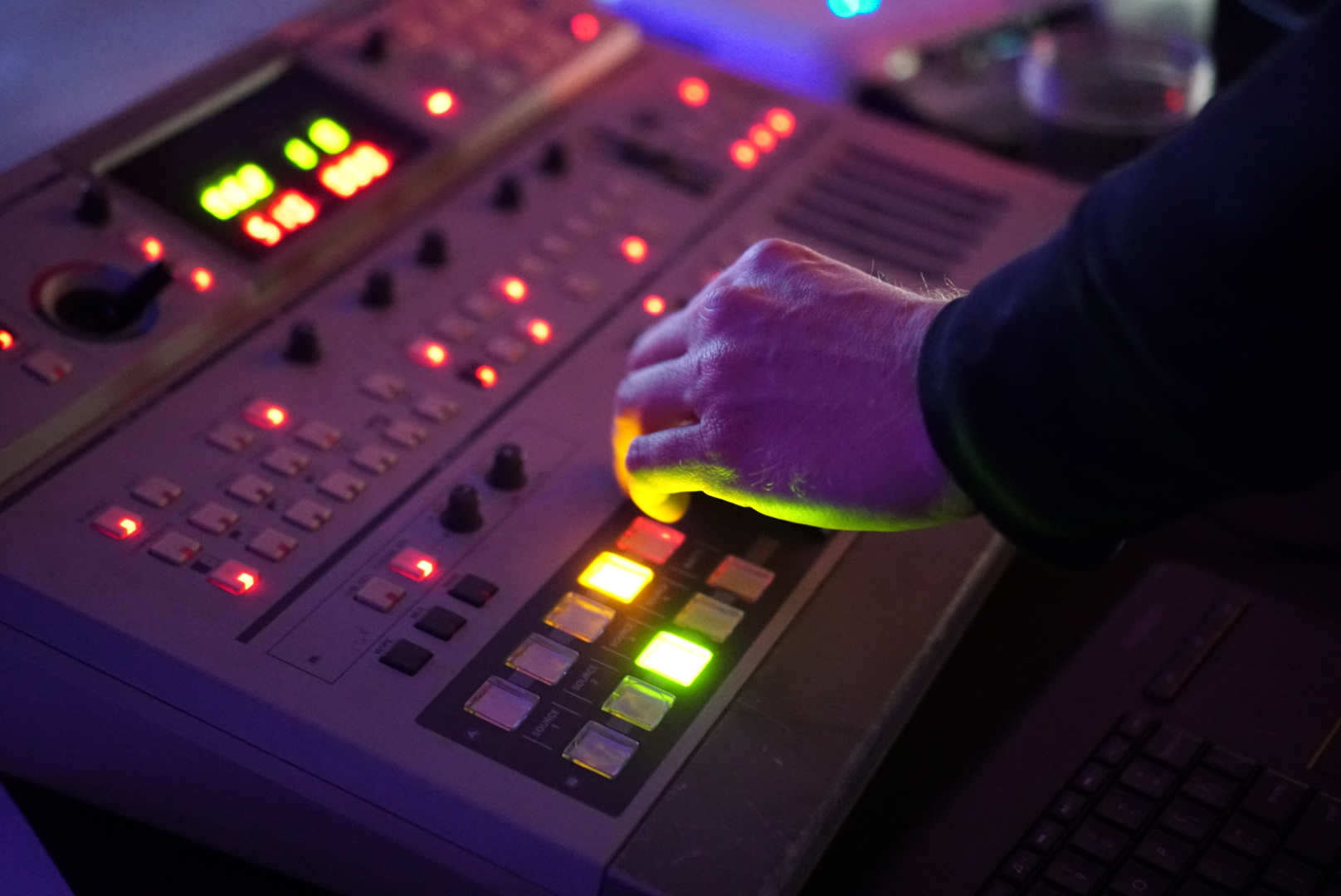Across four issues, Nate G has transmuted his Northwest, Washington, D.C. experience into a fantasized world populated with your favorite hometown musicians, wielding superhuman powers.
The artistic talents of some members of the DMV’s music community have been reinterpreted into super powers by Nate G.
Uptown Story is a comic series started by Nathaniel Benneton Gray, who was first introduced to InTheRough as an emcee. After purchasing several sketches as well as a t-shirt from his Niga line, the label “rapper” merely scratches the surface of Nate G’s creativity. The artist who has “UPTOWN” tatted on his belly, is time-stamping the people and the places who have contextualized the D.C. he’s known, lived, and loved.
“If I had a camera, a budget, and some actors, I would make this a movie,” he said, addressing the group of people gathered at Shopkeepers in October to learn more about the narrative of his comics. “But I have something better. I have my pen and my imagination.”
Although volumes are accessible via Instagram, Nate G presented a number of large-scale versions in the basement of the cafe/retail space on Florida Avenue. The vivid comic panels were reminiscent of Andy Warhol’s 1963 series, Flash, which chronicled the assassination of John F. Kennedy through screen prints of photographs and texts pulled from various news publications. Patrons took their time reading each piece, the stories developing as they advanced around the room.
Cap’n Uptown is the main protagonist throughout the series. A sketch by Gray of an omnipotent God and Nubian angels descending a cherub from heaven into the D.C. streets birthed the idea of Uptown Story. Illustrated shirtless with a red cape, golden bracelets, rings, chains, and the same “UPTOWN” tattoo that Nate bares, the superhero evokes images of X-Men characters, Static Shock, Mr. T, Luke Cage, and of Gray himself.
“It feels like Saturday morning cartoons,” he said of his comics.
Pittsburgh by way of D.C. transplant Babyteeth drawn on a comic panel of Nate G’s Uptown Story. Displayed at Shopkeepers; Photograph by Maxwell Young
This sentiment is particularly evident in the way Nate composes scenes and expresses the underlying tones within Uptown Story. In one of his panels at Shopkeepers, Cap’n Uptown and Afrovelvet, a long-time friend and frequent collaborator of Gray’s, are pit against one another in a heated tennis match before a surprise missile attack interrupts their set, and they have to spring into action. Nate creates this drama because the reader is distracted by the intense level of competition we perceive that he depicts through command of angles and depth. Moreover, the suspense is drawn out as the volumes end with cliff-hanging questions that harken back to the manner in which Dragon Ball-Z and other anime comics begin stories “en media res,” or, in the middle of things.
It is important Uptown Story reflects the culture and flavor of Washington, D.C., which is why Nate G draws people like Mista Selecta and Babyteeth encountering evil villains at places like the Uptown Theater—a landmark in the Cleveland Park neighborhood. In a way, these Uptown Story volumes canonize the creative individuals, institutions, and identities that have contributed to District culture—from the vernacular to the Foamposites.
“There are small D.C. things I try to make that are very D.C.,” he said.
Uptown Story has invigorated Gray’s artistic output as a whole—the drawing and music-making now informing one another. Not only are his latest EP covers self-illustrated, but he wants to tie the visual representation of Cap’n Uptown into a sonic one; Cap’n Uptown the album. That’s what he’s refining these days. In the first quarter of 2019, fans can expect a sensually immersive experience, consuming both Cap’n Uptown comics and Cap’n Uptown music. Follow Uptown Story here and check out Nate G’s “Full Moon EP” here.


